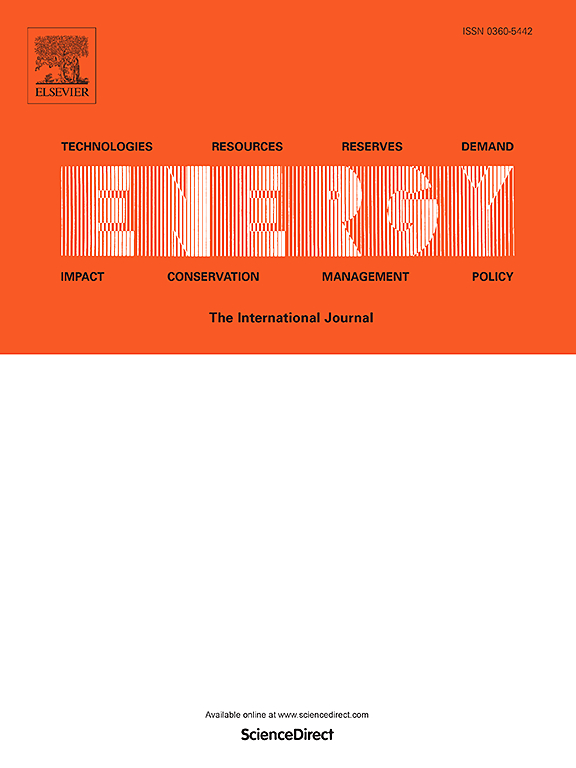如何针对多目标、多工况对工业高温热泵进行优化设计?
IF 9
1区 工程技术
Q1 ENERGY & FUELS
引用次数: 0
摘要
高温热泵以其在工业低碳供暖中的优越性引起了广泛的关注。然而,不可避免的工作条件波动会大大降低其实际性能。因此,如何在设计过程中综合考虑多种条件,具有重要的现实意义。在此基础上,提出了一种多目标、多工况的双层规划模型,其中底层基于间歇泉算法求解的混合模型来获取指定热泵配置在不同工况下的性能,上层采用改进的非支配排序遗传算法生成不同配置并对其进行排序。以投资回收期为目标函数,在三种不同条件下的示例案例中,在相同投资回收期下,采用所提方法的碳减排平均比常规方法增加17.5%,验证了所提方法的必要性和优越性。蒸发器与冷凝器在帕累托锋面上的平均面积之比分别为0.81、0.76和0.73,说明为了更好地适应变化条件,应优先考虑增加冷凝器面积。最终确定了压缩机排量为1959 m3/h,蒸发器面积为154.5 m2,冷凝器面积为232.0 m2的最优配置。本文章由计算机程序翻译,如有差异,请以英文原文为准。
How to optimally design industrial high-temperature heat pump for multiple objectives and working conditions?
High-temperature heat pump has aroused widespread attention for its superiority in industrial low-carbon heating. However, the inevitable fluctuation of the working conditions can significantly deteriorate its actual performance. Therefore, how to comprehensively consider multiple conditions in the design process holds great practical significance. Herein, a bi-level programming model involving multiple objectives and working conditions is proposed, within which, the lower level is based on a hybrid model resolved by the Geyser-inspired algorithm to obtain the performances of specified heat pump configuration under different conditions, and the upper level generates and ranks different configurations by the improved non-dominated sorting genetic algorithm. In the exemplary case with the payback period, carbon emission reduction being the objective function and three different conditions, an average 17.5 % increment of carbon emission reduction can be achieved by the proposed method than the conventional one under the same payback period, validating its necessity and superiority. The mean ratios of the evaporator to condenser area involved in the Pareto fronts are 0.81, 0.76 and 0.73, indicating that priority should be given to increasing the condenser area for better adaptability of variable conditions. Finally, the optimal configuration with compressor displacement, evaporator and condenser area to be 1959 m3/h, 154.5 m2 and 232.0 m2 is established.
求助全文
通过发布文献求助,成功后即可免费获取论文全文。
去求助
来源期刊

Energy
工程技术-能源与燃料
CiteScore
15.30
自引率
14.40%
发文量
0
审稿时长
14.2 weeks
期刊介绍:
Energy is a multidisciplinary, international journal that publishes research and analysis in the field of energy engineering. Our aim is to become a leading peer-reviewed platform and a trusted source of information for energy-related topics.
The journal covers a range of areas including mechanical engineering, thermal sciences, and energy analysis. We are particularly interested in research on energy modelling, prediction, integrated energy systems, planning, and management.
Additionally, we welcome papers on energy conservation, efficiency, biomass and bioenergy, renewable energy, electricity supply and demand, energy storage, buildings, and economic and policy issues. These topics should align with our broader multidisciplinary focus.
 求助内容:
求助内容: 应助结果提醒方式:
应助结果提醒方式:


